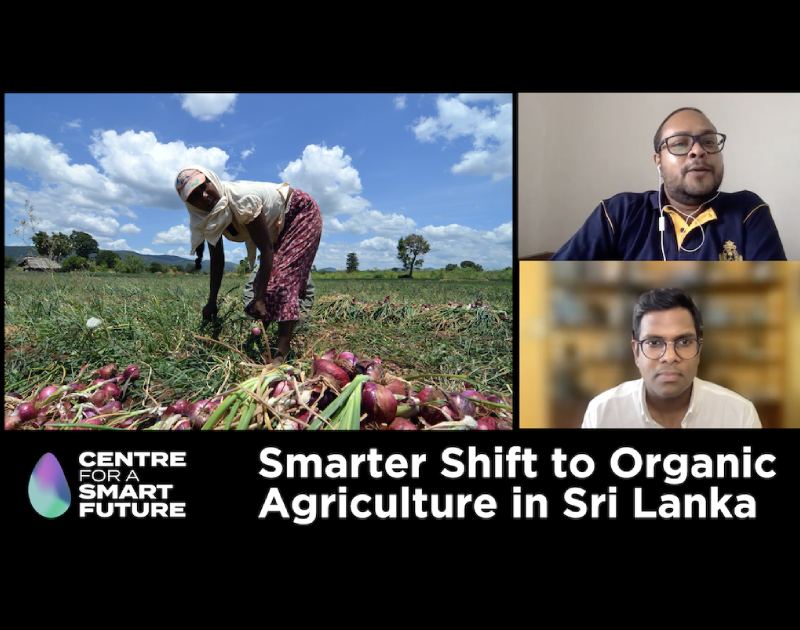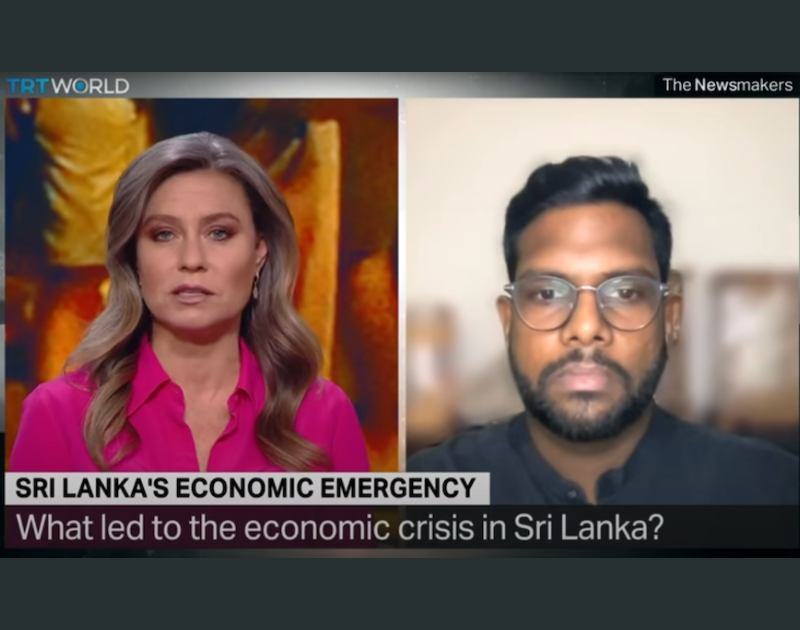
- Home
- Knowledge Insights
- Valuing the Catch of the Day: Towards a more Humanised Food Value Chain
The Peliyagoda Fish Market is a fascinating place which serves an important role in the movement of seafood throughout the city of Colombo and beyond. It is a sensorial experience due to the array of seafood on display, and the energy and labour provided by all who make this market space function.
By 10.30am at the wholesale stalls or wholesale leli where most of the sales took place since 2.00am, people begin to crunch numbers and calculate the day’s earnings, debts and the commission fees due to suppliers. Others begin packing the remaining fish into boxes for storage and splashing water to clear debris from their stalls. Meanwhile, cleaning staff begin their activities to collect waste and see to it that the biological waste is received by the fish meal processing plant at the back, while the waste which is to be collected by the Municipal Waste collection truck is gathered elsewhere. These are a fraction of activities taking place at the Central Fish Market. In fact, these are but a much tinier fragment of activities taking place between the Indian Ocean and one’s plate, as seafood moves from the boats harvesting our fisheries, to the fish landing sites, and finally to the vendors at markets of various sizes such as the Central Fish Market in Peliyagoda, and the numerous static and mobile vendors across the island.
When speaking to the vendors at Peliyagoda and fish suppliers, prices are what appear to determine the path sea food takes as it navigates these constellations of nodes which make up the fish market network which extends across the country. However, unsurprisingly, people speak about the importance of relationships and the means of communication when establishing market linkages, for the importance of trust is something everybody spoke about.
Speaking about the market for fish in general, Namal who is a fisherman said that the best quality tuna, red snapper, squid and lobster find their way to the export markets. Some fishermen may have agreed on a price with the buyer(s) even before their boats have reached their destined landing sites. Nalin, who is a fish supplier from Negombo described how even some smaller boats also have similar arrangements with potential buyers before landing their catch on to the beach. As the seafood moves inland from the beaches where they are released from the nets and separated by type, the prices may begin to vary depending on negotiations and auctions which take place where a rupee value is pinned onto a unit of fish of a particular type. If prices are not satisfactory, waiting is always an option for both buyers and sellers.
When I spoke to Nalin at around 10.30am, he was seated on top of a concrete workbench which almost extends the length of a small fish market place managed by one of the fishing societies. The main building of the market is empty except for a few sellers operating a few isolated stalls outside of the main building. He was waiting for two boats carrying fish which he was interested in buying, while also waiting for fish from the beach to arrive at the market because the prices at the beach are a bit too steep for him. Nalin’s decisions are at least partly influenced by the daily phone call with the vendor at Peliyagoda who he supplies to. Suranga, who supplies fish from Modara to the Central Fish Market, also described how phone calls help plan for the next day. He also described how he visits the market as well in order to get a “feel” for the prices of fish which helps him plan.
Direct questions on how price is determined fail to provide satisfactory answers. Some vendors at the Central Fish Market explained that the “price” is determined at the beach. However, when speaking to people further up the fish supply chains extending from Negombo and Modara, it is clear that directly or indirectly they are keeping track of fish prices at the Central Fish Market. Namal also described types of information which determine the supply of fish from a particular landing site which includes memories about past weather conditions, the cultural relevance of a particular period of time for a fishing community, and whether or not it is the monsoon season (when the sea is rough). He also explained how fish stored in ice also affects the price of fish.
While speaking to Nalin, a fisherman walked into the fish market to begin selling a basket of Sudayo (White Sardinella) he was carrying. While selling he began to complain about the cost of being a fisherman. Not only have the prices of the boats, engines, gear, and fuel increased due to the financial crisis, there is a clear drop in the quality of the gear which is available. Nevertheless, he says that his earnings for the day will need to cover the wages of the eight people who he has employed for the day. He also spoke about how his wife is probably buying Sudayo at a much higher cost from a neighbouring fish seller – thus linking his household to the fish market as both a producer and a final consumer. Due to the lack of sales at the market, he begins to search for better prices. He requests another fisherman to call a buyer to advertise the availability of his fish at a particular price and with the help of one of his employees, begins carrying the remaining fish and the weighing scale to a location closer to the road while the remaining seven employees continue to work where his boat landed.
A fisherman points out that the reason why the marketplace seems almost empty these days is because the price of fish is too high for most of the vendors to make a profit at this location. A prior visit to a small fish market at Modara, saw more action with fishermen selling their catch at either set prices or engaging in negotiations with potential buyers. At one point, a selection of fish which was on display was being collected into the buyer’s bucket by the seller while the two people were still in the process of negotiations. All around these two people, less animated engagements between buyers and sellers were also taking place, with some discussions taking place via phone calls. However, the fishermen in Modara are not immune to the market forces influenced by the financial crisis, for a group of fishers who were helping another to remove kinks and curls of a new coil of nylon rope, echoed the views of their counterparts in Negombo about the cost and quality of gear.
It is unsurprising that attempts at describing how exactly the market for fish is structured and functions, forming channels of perishable goods, beginning from the coast and extending across the country, cannot do justice to its sheer complexity. Economist Friedrich Hayek likened the market to a “highly complicated organism” (Hayek, 1933, pp. 123) where “every part performs a necessary function for the continuance of the whole” (Hayek, 1933, pp. 130). Markets according to Hayek were not merely places where goods and services are produced, provided, and consumed, but also facilitates the communication of “relevant information” through many intermediaries whose “limited fields of vision” sufficiently overlap (Hayek, 1945, pp. 526). Prior to Hayek, John Maynard Keynes’ was more candid about what he thought about questions on how exactly markets function when he admitted that
“… we simply do not know. Nevertheless, the necessity for action and for decision compels us as practical men to do our best to overlook this awkward fact and to behave exactly as we should…” (Keynes, 1937, pp. 214).
Even with limited understanding about how exactly they function, it is hard to not appreciate the capacity of markets to coordinate the movement of seafood from our oceans to our plates using the price mechanism and relationships. However, exploring upstream of the fish supply chains, does beg the question about what “relevant information” is lost when the value of fish is determined by the price mechanism.
For the price mechanism of a market is after all a collective exercise of value clarification. Here, the work of Professor of Philosophy Thi Nguyen who studies the social impacts and outcomes of games and gamification of systems is important to consider. His studies show how imposing singular clarified value systems on real-world activities drive out value pluralism which he says is important for a “vibrant social-political community” (Thi Nguyen, 2021; Caroll, 2021).
The distress of fishermen who are finding it increasingly harder afford their traditional livelihood, the plight of vendors of small fish markets where prices of fish are beyond the spending capacity of the immediate community, the loss of livelihoods of the most vulnerable of us who provide their labour at fish landing sites, and the impacts on marine life as fishermen may be forced to maximise catch to make each trip to sea economically efficient: How well does information about these aspects travel with price information? Or is this information not relevant?
I cannot say for certain what the answer to the first question is, however, I do believe information about issues such as those mentioned above are relevant. Often morals and ethics pertaining to social, economic and environmental considerations are incommensurate with one another. Therefore, even though the market for fish which is in operation in Sri Lanka is wonderfully complex and should be appreciated for what it does, I do think we can humanise our food value chains further and ensure that the system is modeled to capture values beyond what is easily quantifiable and described in Rupees and Cents.
Caroll 2021. 169 | C. Thi Nguyen on Games, Art, Values, and Agency – Sean Carroll [Podcast] 18th October 2021. [Accessed 10 March 2023]. Available from: https://www.preposterousuniverse.com/podcast/2021/10/18/169-c-thi-nguyen-on-games-art-values-and-agency/.
.
Hayek, F. 1945. The Use of Knowledge in Society. American Economic Review. 35(4), pp.519–530.
Hayek, F.A. 1933. The trend of economic thinking. Economica., pp.121–137.
Keynes, J.M. 1937. The General Theory of Employment. The Quarterly Journal of Economics. 51(2), pp.209–223.
Thi Nguyen, C. 2021. How Twitter gamifies communication. Applied epistemology., pp.410-436.

